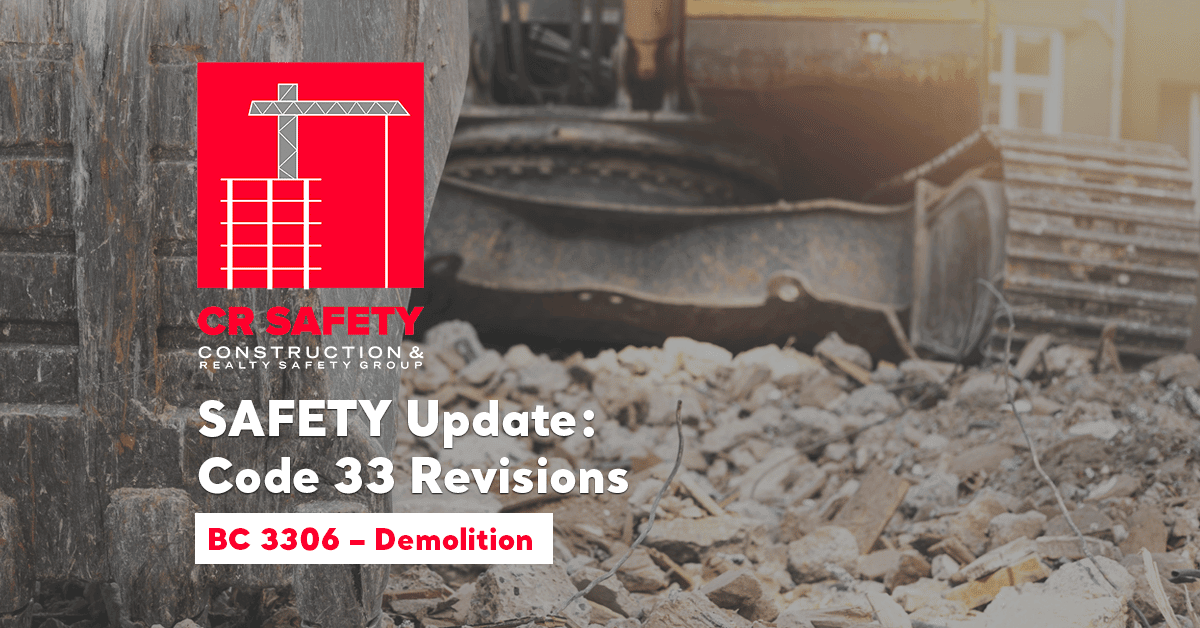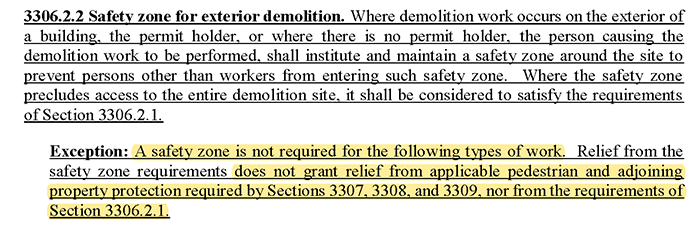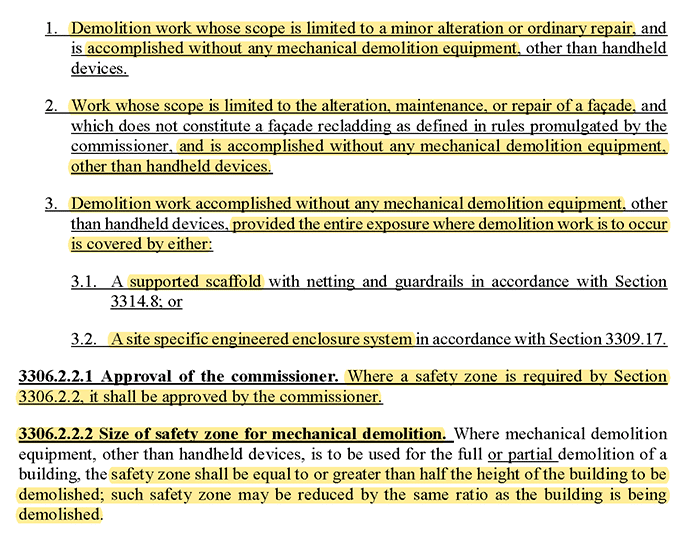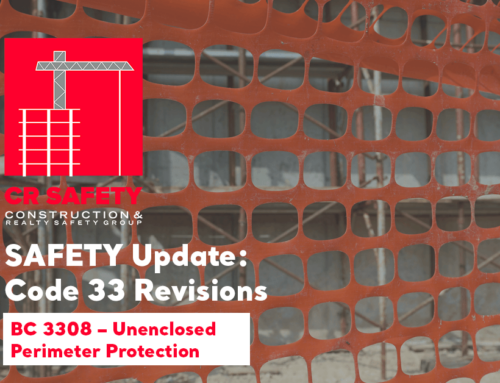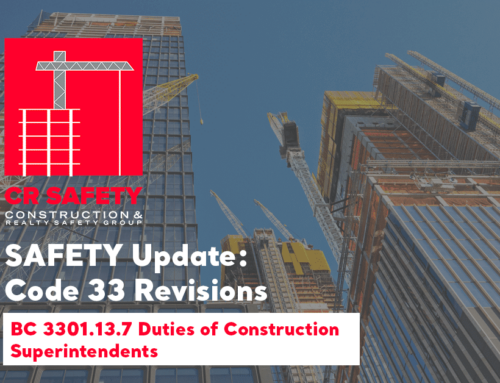Our Series on the 2022 New York City Building Code, Chapter 33, Safeguards During Construction or Demolition Continues…
Introducing BC 3306 – Demolition
The existing code sections pertaining to exterior demolition safety zones, required to mitigate material/debris fall hazards to the public, have been revised and include several exceptions. The changes are relatively minor.
The safety zone prevents unauthorized persons from entering the demolition area. The safety zone does not pertain to authorized demolition workers, though such workers would still be covered under OSHA’s broad material fall hazard mandate.
The exceptions to the requirement for a safety zone apply only to minor alterations/ordinary repairs (including façade repair and maintenance) performed without the use of mechanical demolition equipment, except handheld devices. For demolition beyond this scope of work, a safety zone exception is allowed if the exterior is enclosed with a supported scaffold and vertical netting or a “site-specific engineered enclosure”, provided no mechanical equipment is used, except hand-held equipment. This latter exception is new.
When a safety zone is required, it must be approved by the commissioner (illustrated on the site safety plans and, on the demolition, means/methods plans). Except for mechanical demolition, the size of the safety zone is not stipulated. For mechanical exterior demolition (using other than handheld devices), the safety zone is ½ the height of the building at any given stage of demolition. The safety zone can be contracted as demolition progresses toward grade, provided the zone remains equal to or greater than ½ the height of the building. This requirement for mechanical demolitions can prove difficult or impossible to comply with for high-rise demolition of buildings with street walls and perimeter walls on the lot line because there is no supported scaffold or site-specific engineered enclosure exemption for mechanical demolition, only for non-mechanical. Nothing has really changed in this regard, but DOB historically has waived the safety zone requirement when the site was cocooned with a supported scaffold and debris netting, even for mechanical demolitions staged within the building. But this policy was not codified this round. However, the contractor always has the option of filing a CCD-1 and requesting a variance.
It should be noted that an open pedestrian walkway protected by a sidewalk shed cannot be located within the safety zone, as the safety zone is required to prevent unauthorized persons from entering the zone.
Should you have any questions about these safety code changes, give us a call at 212-736-6900 or email us at: info@crsafetygroup.com
You can find the Chapter 33 Safeguards During Construction OR Demolition General Section here…
You can find Local Law 126, authorizing the revisions of these building codes here…
A Full-Service Safety Management Firm
CR SAFETY offers full-service construction safety solutions, including on-site, professional safety management staffing, complete and customized Plan Program Development, and all required safety training.

